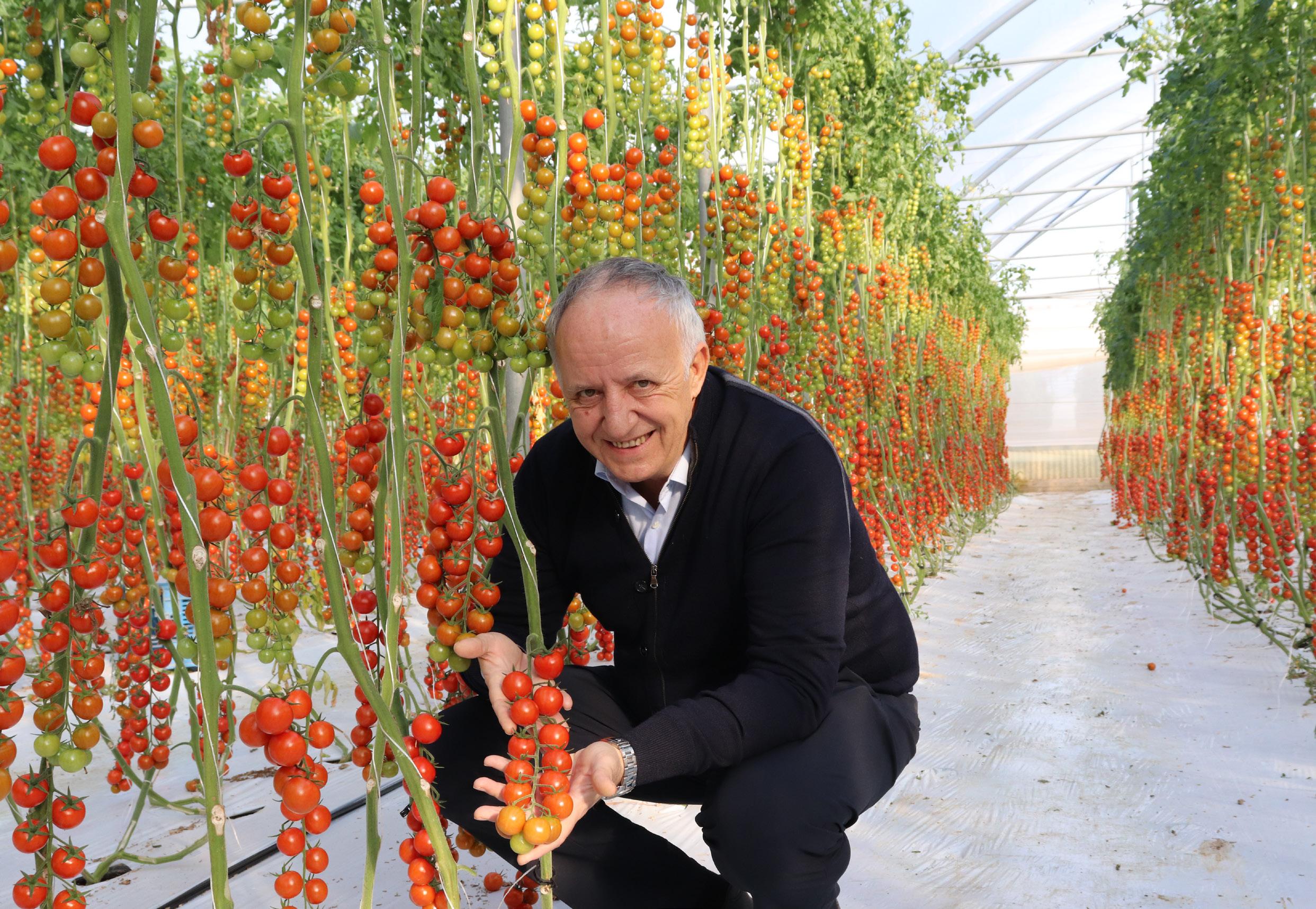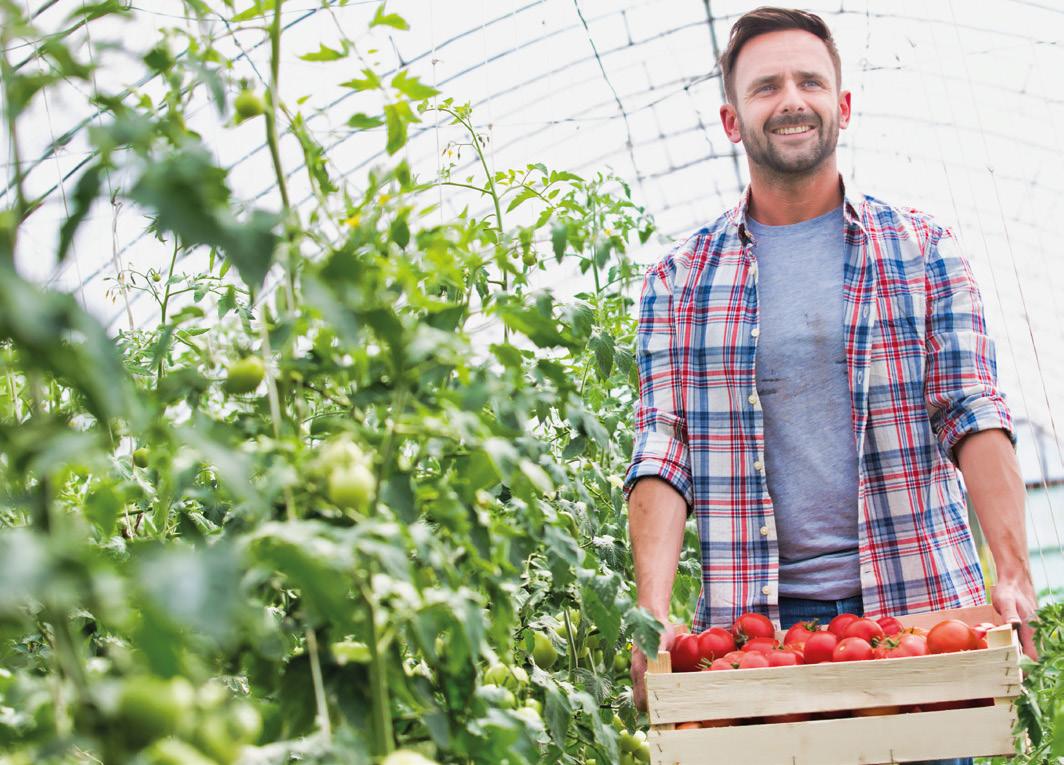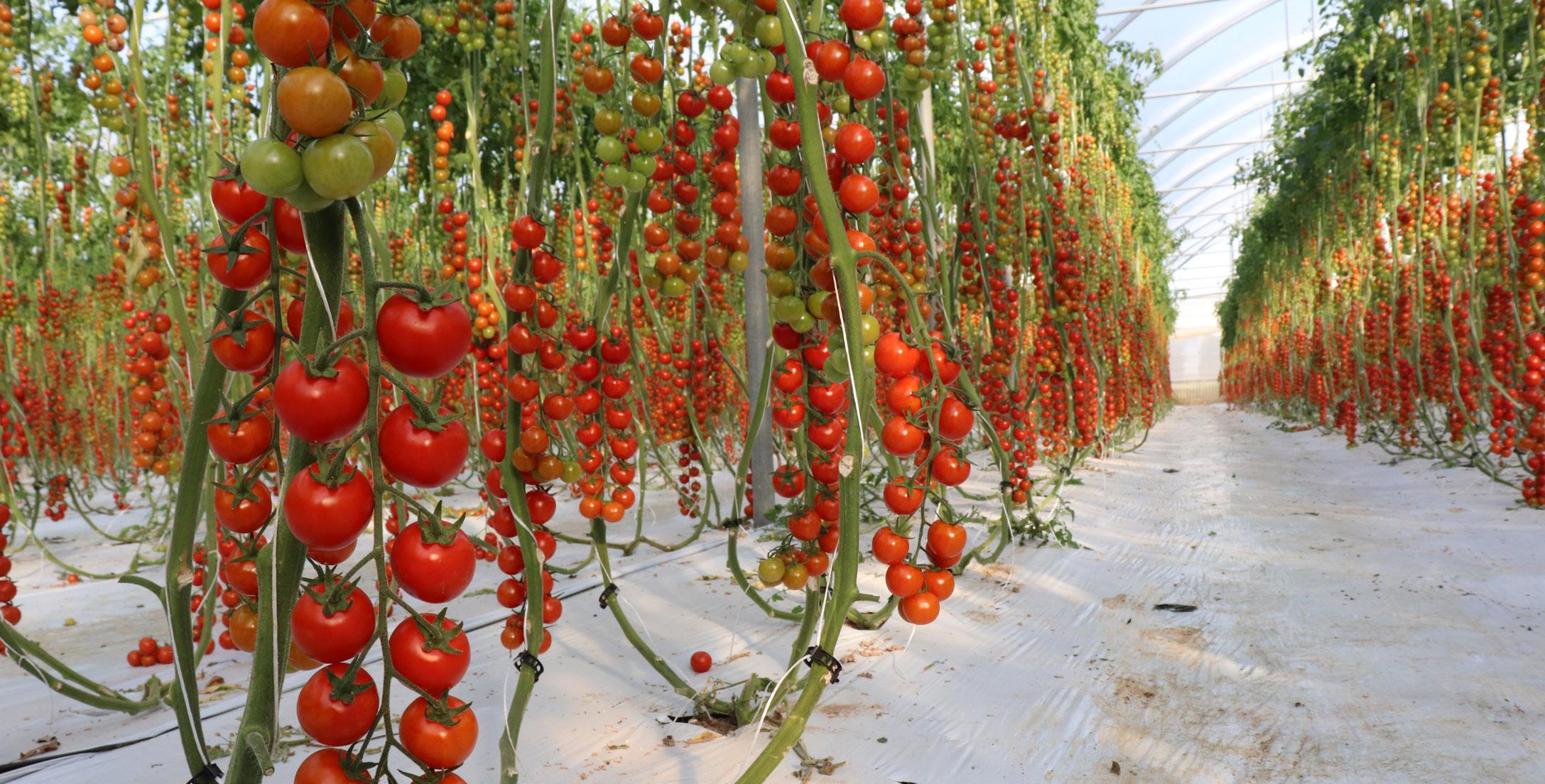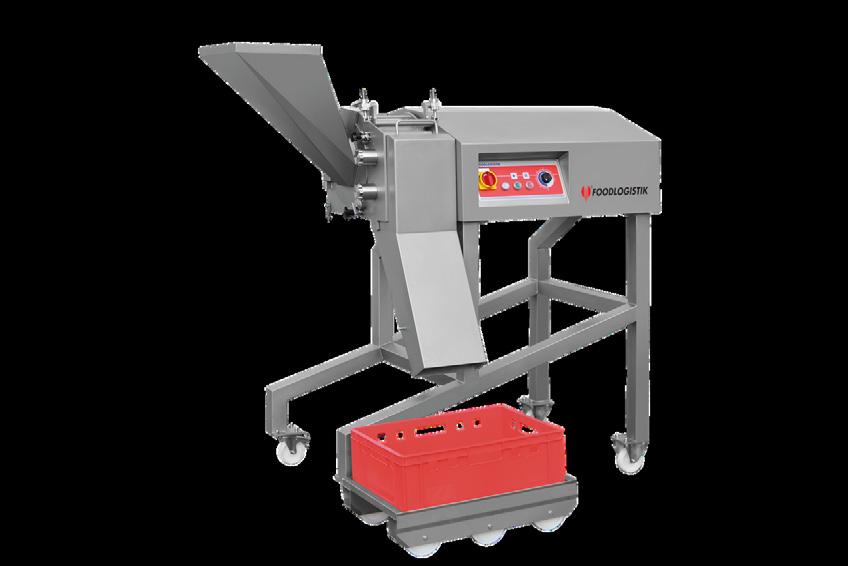
8 minute read
Is Munich still the main destination for the export of Italian greenhouse-grown vegetables to Germany?
Massimo Pavan, European agribusiness expert
"Until 30 years ago, the trade and distribution of fruit and vegetables in German markets was mainly managed by Italian immigrants, which allowed for a greater affinity in business contacts with Italian producers. Gradually, and for over twenty years now, the market stalls in Germany have been acquired by traders of Turkish origin who have progressively shifted part of their supply towards their country of origin," said Massimo Pavan, an expert in European agribusiness, current president of the Consorzio di Tutela della Carota Novella di Ispica (Consortium Novella Carrot of Ispica), coordinator of the Comitato O.I. Pomodoro da Mensa (Interprofessional organization of the industrial tomato), member of the Board of Directors of the Consorzio di Tutela del Pomodoro di Pachino IGP (Consortium for the PGI pachino tomato).
"Nevertheless, Germany continues to be the first market outlet for our greenhouse vegetables, partly thanks to the geographical proximity that allows us to deliver our goods to Monaco or Bavaria in three days, despite the difficult road conditions. In this way, we are able to maintain the freshness during the entire complex logistics process, guaranteeing the added value of an Italian product."
To date, the main German destination for Sicilian greenhouse vegetables (which constitute most of the Italian production) is not Munich, but rather the various large-scale retail trade channels, located throughout the Federal Republic, including, of course, the large market of the Bavarian city. Over
time, as the sales volumes in the German fruit and vegetable markets decreased, the empty spaces were progressively occupied by the large-scale retail trade, which is now physically present in the major German markets.
"Most of the production that arrives in Germany is certified. It is not possible to operate in this market without the main certifications such as GlobalGAP, GRASP, IFS. Italian products destined for Germany are very guaranteed, despite the fact that they have to face strong EU and non-EU competition. In the latter case, the comparison is particularly heated in terms of production and ethical standards, which also leads to a price gap, regardless of the geographical origin and the production processes.”
The EU has not yet proved its effectiveness in regulating a price policy that can harmonize the inevitable gap between the production areas bordering the Mediterranean Sea.
"In the Euro-Moroccan agreements, the customs duties applied are insufficient to protect Italian products, particularly tomatoes, given their higher intrinsic value. The duty rates currently applied may be fine for round smooth tomatoes, but not for small cherry tomatoes, which have a higher cost of production. It was necessary to align or rather diversify the duty based on the production costs, according to the type of tomato.”

"If the cost of production of a round tomato in Europe is 0.70 €/kg, and in Morocco it costs 0.40 €/kg, the duty, to equalize, must be 0.30 €/kg. If the customs rate on tomatoes remains always the same, regardless of the type, it is clear that for cherry tomatoes the same customs rate is not fair because their production cost is 1.00 €/kg. It is imperative that Brussels balances the market through a differentiated rate based on the various costs. We are not demanding changes to the agreements, but at the very least they should be reviewed".
Let us take a closer look at all the main greenhouse vegetable products exported from Italy to Germany. According to CSO Italy, the export of Italian vegetables (and legumes) to Germany annually amounts to about 330,000 tons (average of the last five years) but with a downward trend if we consider the period from 2016 to 2020.
The 2016 campaign marks the peak of the last five years with almost 370,000 tons, while the following years have been equal or below 321,000 tons. The period of greatest export is concentrated between January and May and again in the two-month period November-December and covers on average about 88% of total volumes of the years taken into account. Specifically,
THE PÖPPELMANN EFFECT: Resource-saving packaging.

Reduce

Reuse

Recycle
GSNL knows all about lighting!
Lighting contributes to high-quality production all year round.
GSNL develops, produces and assembles electronic lighting components for the greenhouse horticulture sector, hydroponics, OEM partners and for growers. Our HPS and LED drivers are adjustable from 40 to 1200 watts, with an input voltage ranging from 120 to 480 volts. Benefit from our knowledge, expertise and experience in high-quality lighting systems. Interested and want to know more? Contact us!
GSNL connects technological knowledge with innovative solutions www.gs-nl.com | info@gs-nl.com | +31 (0) 17435201

exports of courgettes, eggplants, peppers, and tomatoes represent about 28% of the total vegetables that reach Germany every year.
At a national level, courgettes show a growing trend, both in investments and productions, if we consider the last five years. Moreover, the year 2020 has seen more than 19,000 hectares of cultivated courgettes, including both open fields and greenhouses, with a harvest close to 590,000 tons per year, the highest seen since 2016.
Courgettes are by far the crops most exported to German markets with an average of almost 55,000 tons per year (the reference period is always from 2016 to 2020). Until 2019 the trend was downwards, with an upturn during the past year. The highest export peak occurred in 2016, with more than 76,000 tons exported. In 2020 Italy has shipped more than 45,000 tons of courgettes to German markets, up about 30% more than 2019 and with quantities closer to those shipped in 2018.
Italian peppers occupy 10,500 hectares of land on average, which amounts to an average production of almost 180,000 tons per year (2016-2020 period). Both investments and harvests show a slight decrease over time. Peppers exported to Germany amount to a little more than 10,000 average tons per year. Since 2017, the trend has been declining, with exports reaching their highest value of approximately 17,800 tons over the last five years. In contrast, the year 2020 marked the lowest volumes since 2016 with slightly less than 7,000 tons (-21% compared to the quantities shipped in 2019).
During 2020, the largest volumes were shipped between June and August and accounted for 36% of the total, while 29% of the total was shipped between February and April. In all the years taken as reference, the autumn and early winter months showed a more limited export.
Another product that Italy exports in low quantities to Germany, are eggplants. At a national level, the surfaces dedicated to this product amount to a little less than 10,000 hectares, and also in this case there is a slightly decreasing trend with a production around a little more than 300,000 tons per year (average 2016-2020) and characterized by only minor fluctuations. Among the years considered, 2020 had the highest annual export, with a little more than 12,000 tons. During the last commercial season, the most significant exportations occurred in the period between May and September, with almost 2,000 tons of eggplants in August, by far the highest quantity over the last five seasons.
STR The IPS, CU DicR® an B d E S S hr AND eddR® SLI ma CES de by FOODLOGISTIK


FOODLOGISTIK representative in the Netherlands
Gouda Groningen Tilburg www.delmo.nl +31(0)88-8543 800 info@delmo.nl

The annual production of tomatoes cultivated in Italy, including both greenhouse and open field crops, is on average more than 1,000,000 tons, the result of almost 25,000 hectares cultivated from 2016 to 2020. Among the seasons taken into account, the only ones that showed a drop in investments and production were 2017 and 2018, while the remaining years were in line with the average data. Over 18,000 tons of industrial tomatoes were exported to Germany (average between 2016-2020), but with a swinging trend over time. The most favorable year was 2016 with almost 27,000 tons exported, which was the highest level of volumes of the period observed, followed by a drop the following year and a slight recovery in 2018, closing the campaign with about 18,000 total tons. In 2019, tomato exports marked the lowest result with slightly less than 15,000 tons, only to rise again in 2020 with volumes in line with 2018.
The data show that exports are mainly concentrated in the winter period, thanks to
POWERFULSOFTWARE FORYOURPRODUCTION
greenhouse cultivations located in southern Italy, where tomatoes are the most cultivated crop. During the last two campaigns, shipments have increased in the month of December compared to previous years (with a share between 25% and 30% of the annual total) while those in April have decreased (from 12% in 2016 to 2% of the last season). Shipments between January and March have remained constant, on average making up no less than 30% of the total exported to German markets.














